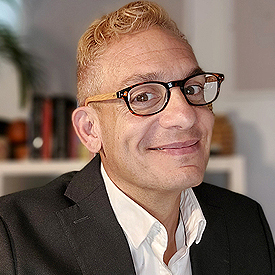
A dark basement room. A line of reheated coffee cups watching from a shabby table under the blinking fluorescent lights on the ceiling. A moldy piece of pineapple cake observes a group of people seated in a circle.
Establishing objectives
– Hi, my name is Matthew. I’ve been working in social behavior change communication for a while.
– Hi Matthewwww. No sign of enthusiasm from that sad, depressed salutation choir.
– I thought I had gotten over this long time ago, but some nights, I wake up in sweat after having very vivid nightmares. Let me tell you…
After weeks of meetings with my communications counterpart designing the communication strategy for a government program in an Asian country, I discovered that her boss had a very different idea of what the program was about. He rejected the whole strategy. We were working in two different directions because he didn’t tell his team he had changed his mind about the program’s objectives. We had to start from scratch after 2 months of work. It was so frustrating and demotivating.
The voice of the therapist sounds calmed and firm:
– Remember what we’ve been learning. It’s not really about you. You don’t have to own that.
Establishing objectives in the analysis and research phase is crucial. Before developing the design phase of your communication strategy, share the communication goal and objectives with all stakeholders, and together, reach a consensus. Sometimes, these meetings might show some differences among stakeholders on what and how they want to communicate. You must be firm and not move along with the strategy until everybody is in agreement with these fundamentals.
Designing messages
– Hi, my name is Emma. I’ve been working as a communication for change consultant for ten years.
– Hi Emmaaaaaa – the whole group salutes like a sad choir.
– Let me tell you a very embarrassing experience.
Last year I was hired to design a Public Communication Campaign in a South American country. The government officials insisted in creating, by themselves, some messages for outreach communications disregarding the communication team’s advice. These messages were spread in several community meetings by social mobilizers who shouted out loud to the audience the same motto over and over again for weeks.
Emma looks at her feet. Her arms fall down like dead leaves. She keeps on talking with a nearly inaudible voice:
We collected audience’s feedback after those meetings and, even if everybody was able to repeat the messages, qualitative data shown that they didn’t understand the meaning at all. The program was a mess in terms of community engagement. I felt so guilty for letting these officials conduct the communication outreach engagement campaign without the proper skills.
– Depression is anger turned inward- the firm voice of the therapist cuts Emma’s sobbing – Stop weeping, is not your fault. We understand you. It’s not your fault.
-It’s not your fault Emmaaaaaa! – The group sings with one voice.
The firm voice rumbles in the, now silent, room.
When designing messages, these must be agreed upon by all stakeholders and linked with clear qualitative monitoring mechanisms. Giving information is not enough when engaging people in public campaigns. Messages must be tested before the implementation phase. Communication is about understanding the message and acting according to that message.
Study local events
-Hello everybody. My name is Cecilia, I’m a Communication Strategist working in public health campaigns.
-Hi Ceciliaaaa. The group salutation sounded like a wail.
-It’s the first time I talk openly about this. I was so ashamed but, with your help, I think I’ve got over it.
While developing a public survey in a Caribbean country, nobody got why survey respondents refused to open the door on Saturdays until they realized that these were the days chosen by Adventists to go door to door and evangelize. Obviously, the population decided not to answer them. This cost time and money because nobody studied that. We lost more than 3000 survey respondents.
-Cecilia, I know you have almost overcome this experience. We are very proud of you. You are such a strong Communications Professional- the therapist holds Cecilia’s hand while talking in a smooth, warm tone.
During the analysis and research phase, it is mandatory to devote some time on global, local, and community events that will be running at the same time as the communication activities. Then, in the design phase, a calendar, taking into account all these data, should be developed. The Implementation phase should provide more information from tracking activities which should be adjusted during rollout communication activities.
Track communications
– My name is Aya. I work in reproductive health communication programs for a NGO.
Months ago, we planned a community meeting with notable women in a rural area in a Middle East country. The plan was to test and adjust the outreach messages we created, but, when social workers explained to them the idea, all answers were ‘yes, true, right, understood’.
But despite this, the program didn’t work. We concluded that they didn’t understand the messages, they just simply responded all questions affirmatively because they felt they had to. When we investigated deeper we found that being asked by males in a dominant position was driving their answers. Social stigma defeated communication.
-Aya, we know this is hard to admit but talking out loud is the first step to change. Let me tell you something:
When planning an outreach activity, both quantitative and qualitative key performance indicators should be designed. It is not enough to track if the audience said they understood the messages, it is also necessary to know how they perceive these and what is their opinion about them. When developing outreach communications, using audience advice is mandatory because they are the experts on what and how to deliver these messages.
– I think this is all for today. Keep improving, you are doing such a wonderful job, fighting your fears and weaknesses. Thank you all, see you next Thursday.
– Thank youuuuuuu. The sound of chairs scraping the floor while the group of shadows starts moving painfully towards the door.
* Communicators Anonymous focuses on the challenges communicators for development face when doing their work. Talking about the trauma that is currently struggling you is the first step towards receiving appropriate treatment. You are not alone. We can help you. Call us now!


